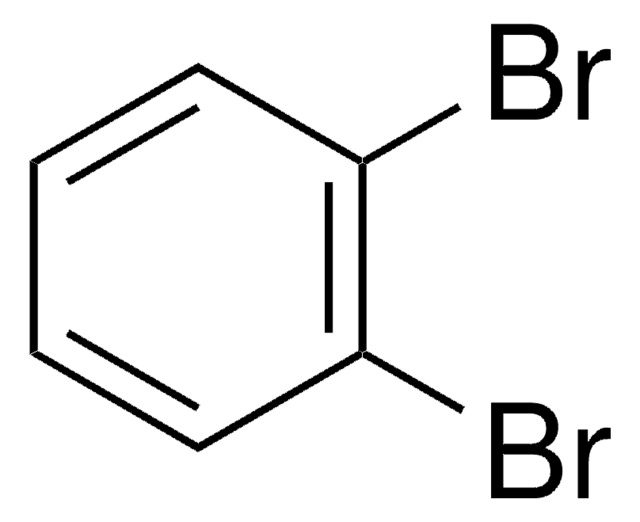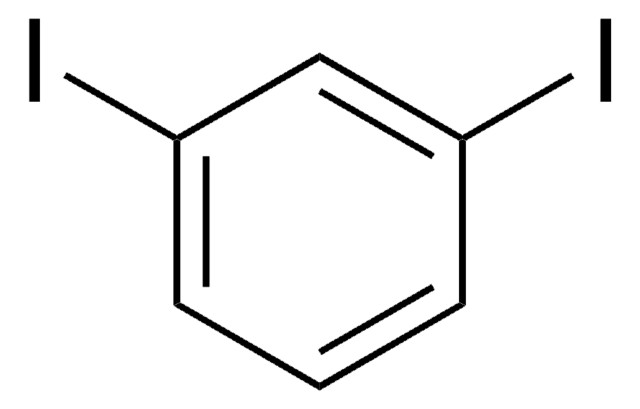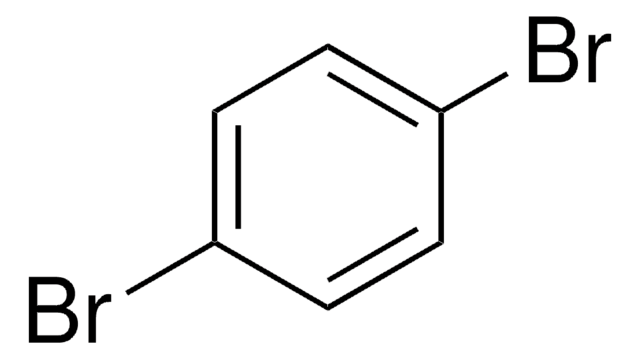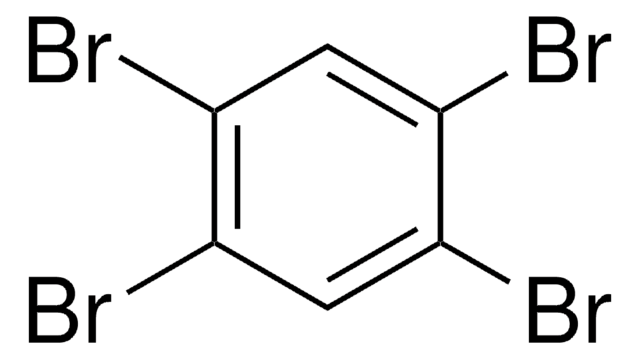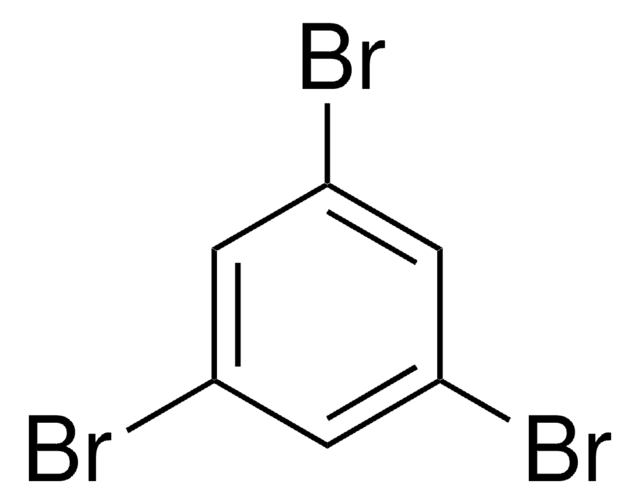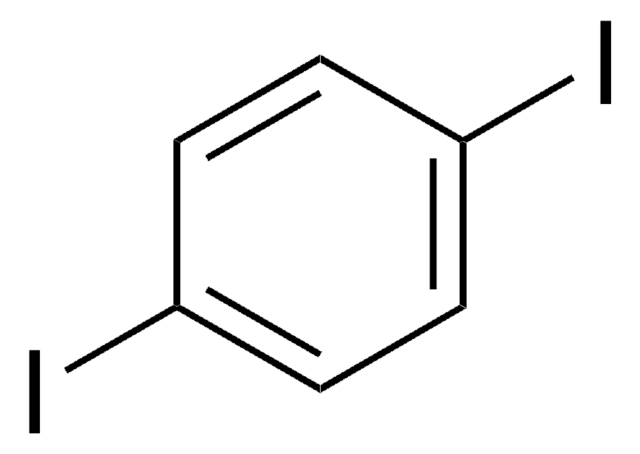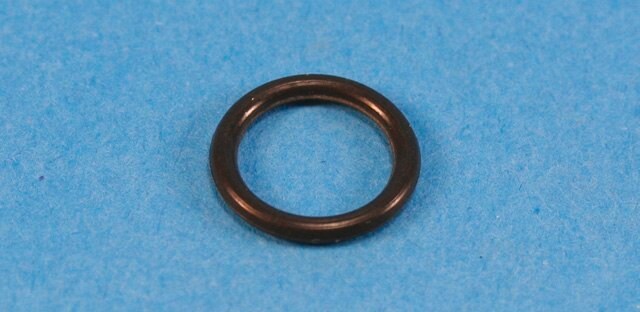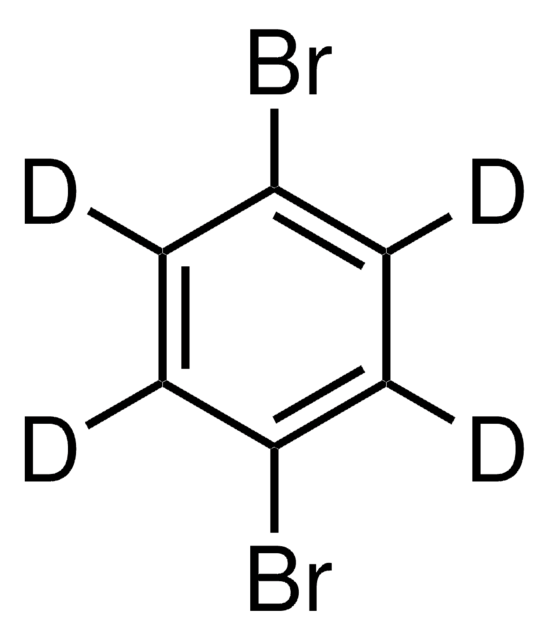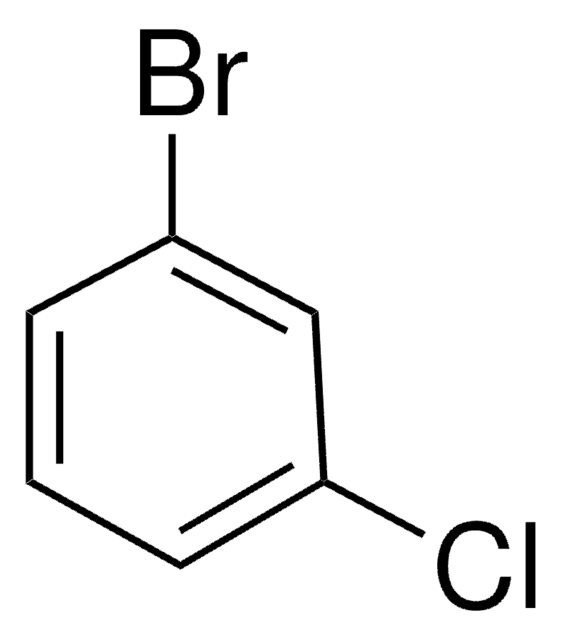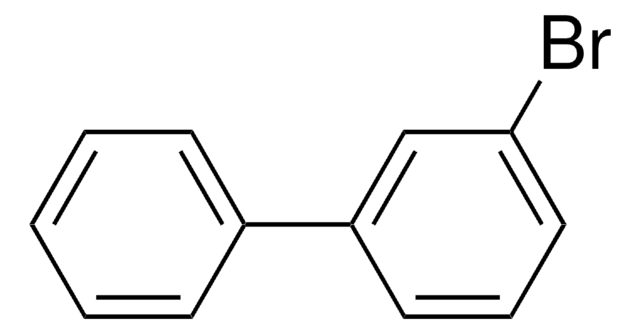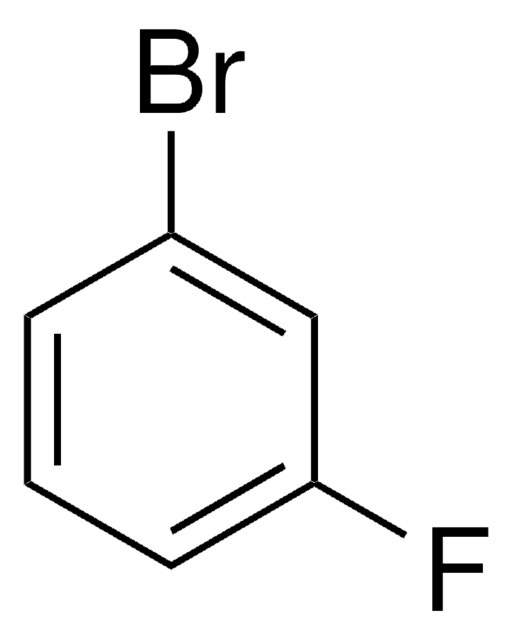194395
1,3-Dibromobenzene
97%
Synonym(s):
1-Bromo-3-bromobenzene, m-Dibromobenzene
Sign Into View Organizational & Contract Pricing
All Photos(1)
About This Item
Empirical Formula (Hill Notation):
C6H4Br2
CAS Number:
Molecular Weight:
235.90
Beilstein:
1904538
EC Number:
MDL number:
UNSPSC Code:
12352100
PubChem Substance ID:
NACRES:
NA.22
Recommended Products
vapor density
8.16 (vs air)
Quality Level
vapor pressure
5 mmHg ( 66 °C)
Assay
97%
form
liquid
refractive index
n20/D 1.608 (lit.)
bp
218-219 °C (lit.)
mp
−7 °C (lit.)
density
1.952 g/mL at 25 °C (lit.)
SMILES string
Brc1cccc(Br)c1
InChI
1S/C6H4Br2/c7-5-2-1-3-6(8)4-5/h1-4H
InChI key
JSRLURSZEMLAFO-UHFFFAOYSA-N
Looking for similar products? Visit Product Comparison Guide
General description
1,3-Dibromobenzene undergoes solid-supported [KF-Al2O3] palladium-catalyzed polyarylation reaction with phenyl boronic acid under microwave irradiation to yield conjugated polyaryls.
Application
1,3-Dibromobenzene was used in the synthesis of [n]metacyclophanes via Suzuki coupling reaction.
Signal Word
Warning
Hazard Statements
Precautionary Statements
Hazard Classifications
Eye Irrit. 2 - Skin Irrit. 2 - STOT SE 3
Target Organs
Respiratory system
Storage Class Code
10 - Combustible liquids
WGK
WGK 2
Flash Point(F)
200.1 °F - closed cup
Flash Point(C)
93.4 °C - closed cup
Personal Protective Equipment
dust mask type N95 (US), Eyeshields, Gloves
Choose from one of the most recent versions:
Already Own This Product?
Find documentation for the products that you have recently purchased in the Document Library.
Customers Also Viewed
Beverly B Smith et al.
The Journal of organic chemistry, 67(15), 5333-5337 (2002-07-20)
Reaction of the bis-9-BBN adduct of several dienes with 1,3-dibromobenzene via Suzuki coupling leads to a series of [n]metacyclophanes ranging in size from 10 to 17 atom members. In each case, two carbon-carbon bonds are formed in one reaction vessel.
Microwave-assisted Suzuki coupling on a KF-alumina surface: synthesis of polyaryls. Microwave-assisted Suzuki coupling on a KF-alumina surface: synthesis of polyaryls.
Basu B, et al.
Tetrahedron Letters, 44(19), 3817-3820 (2003)
A Sapota et al.
Chemosphere, 39(13), 2229-2238 (1999-11-27)
The distribution, excretion and metabolism of 1,3-dibromobenzene following a single i.p. administration to rats 100 or 300 mg/kg was investigated using radiotracer [3H] and GC-MS technique. After 72 hours about 74 to 90% were excreted in urine. The highest radioactivity
J A Szymańska
Archives of toxicology, 71(1-2), 99-106 (1996-01-01)
Rats were used to study acute and subacute hepatotoxicity of 1,3-dibromobenzene (1,3-dBB). In the single-exposure experiment, maximum hepatic 1,3-dBB concentrations were found to occur 1 to 12 h after the exposure, depending on the dose. Maximum concentrations of covalently bound
J A Szymańska et al.
Journal of applied toxicology : JAT, 16(1), 35-41 (1996-01-01)
Various doses of dibromobenzene isomers (1,2-dBB, 1,3-dBB, 1,4-dBB) were administered (i.p.) to BALB mice. The levels of reduced glutathione (GSH) and malondialdehyde (MDA) in the liver, and glutamate-pyruvate transaminase (GPT) (EC.2.6.1.2) gamma-glutamyltransferase (gamma-GT) (EC.2.3.2.2) and triglycerides (TG) in the serum
Our team of scientists has experience in all areas of research including Life Science, Material Science, Chemical Synthesis, Chromatography, Analytical and many others.
Contact Technical Service